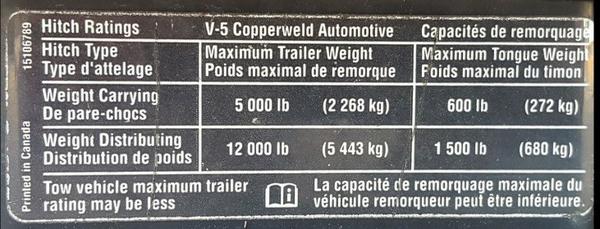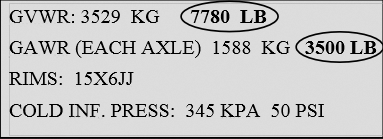Horse Trailer TERMS You Should Know
 EquiSpirit Trailer Co.- Tom’s Trailer Talk
EquiSpirit Trailer Co.- Tom’s Trailer Talk
This month’s Trailer Talk is About TERMS YOU SHOULD KNOW
Have you been confused about trailer weights and capacities? Knowing these terms is imperative when choosing a safe trailer and tow vehicle. Here’s what you need to know:
QUICK TIPS:
DOT – Department Of Transportation.
GVWR – The Gross Vehicle Weight Rating is not a weight, it is a rating. It is stated on the title and on the trailer itself. It is the maximum weight the trailer can weigh and be safe. The GVWR is required on trailers and is calculated by combining the weight rating of both axles and adding the tongue weight. The tow vehicle also has a GVWR however the GVWR is not a towing capacity.
GAWR – The Gross Vehicle Axle Rating is the weight an axle can carry and still be safe. Most horse trailers have two axles. The combined axle ratings plus tongue weight is used to establish the GVWR. The tow vehicle also states a GAWR.
CURB WEIGHT – The Curb Weight of the trailer is the empty weight. A tow vehicle’s Curb Weight is the empty weight as well however can include standard equipment, fluids, and often times, fuel.
GVW – The Gross Weight for the trailer is the trailer’s loaded weight to include horses, all equipment, hay/feed etc. A tow vehicle’s GVW includes passengers, fuel, fluids, and payload.
PAYLOAD – The Payload is the amount of additional weight placed/added to your vehicle.
PAYLOAD CAPACITY – The Payload Capacity (rating) is the amount of weight you can add to a tow vehicle and still be safe. It is calculated by subtracting the tow vehicle’s GVW from the tow vehicle’s GVWR. If the tow vehicle is hitched to the trailer, add the trailer’s tongue weight.
 GCVW – The Gross Combined Vehcile Weight is the combined weight of the loaded tow vehicle and the loaded trailer.
GCVW – The Gross Combined Vehcile Weight is the combined weight of the loaded tow vehicle and the loaded trailer.
GCWR – The Gross Combined Weight Rating is the maximum weight a loaded tow vehicle with an attached loaded trailer can weigh and be safe. The rating is set by the tow vehicle manufacturer, and can be found on a vehicle tag inside the driver’s side door.
TONGUE WEIGHT – The Tongue Weight is the trailer weight at the coupler when the trailer is sitting level on both axles. When hitched to a tow vehicle, the downward weight is placed on the tow vehicle’s frame mounted hitch (SUV or Truck) or on a gooseneck hitch in a truck bed.
TOW CAPACITY – The Tow Capacity is the maximum amount of weight a specific vehicle can tow safely. The criteria to consider for a safe tow vehicle should be towing capacity, wheel base length, curb weight of the tow vehicle and the GCWR.
FRAME MOUNTED HITCH – A Frame Mounted Hitch is hitch bolted to the frame of the tow vehicle at the rear. It has two ratings: Weight Distribution and Weight Carrying.
BALL MOUNT – A Ball Mount is the mount that contains the hitch ball and slides into the frame mounted hitch. It’s attached by a pin. It has a weight rating stamped on it.
BALL – The Hitch Ball is bolted to the ball mount. It has a threaded shaft. It has to fit snug into the hole of the ball mount and be secured by a nut. The ball rating is on top. It has to be equal to, or greater than the tow capacity of the tow vehicle.
WEIGHT DISTRIBUTION SYSTEM – A Weight Distribution System, often mistakenly referred to as “sway bars,” distributes the tongue weight to all the wheels of the tow vehicle and trailer. Frame mounted hitches have a Weight Distribution Rating and a Weight Carrying Rating.
WEIGHT CARRYING RATING – A Weight Carrying Rating is the rating of a frame mounted hitch when using just a ball mount instead of a complete Weight Distribution System.










